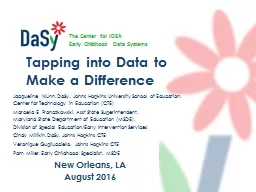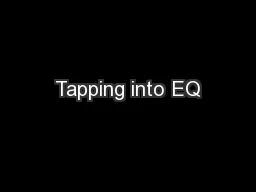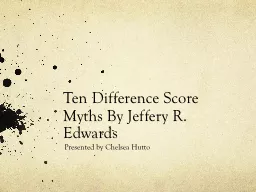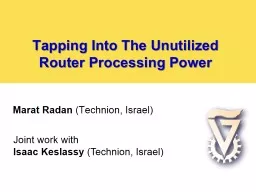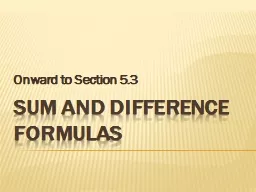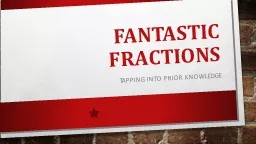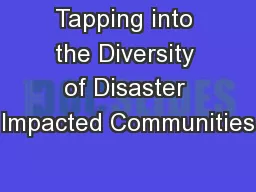PPT-Tapping into Data to Make a Difference
Author : alexa-scheidler | Published Date : 2017-06-21
Jacqueline Nunn DaSy Johns Hopkins University School of Education Center for Technology in Education CTE Marcella E Franczkowski Asst State Superintendent
Presentation Embed Code
Download Presentation
Download Presentation The PPT/PDF document "Tapping into Data to Make a Difference" is the property of its rightful owner. Permission is granted to download and print the materials on this website for personal, non-commercial use only, and to display it on your personal computer provided you do not modify the materials and that you retain all copyright notices contained in the materials. By downloading content from our website, you accept the terms of this agreement.
Tapping into Data to Make a Difference: Transcript
Download Rules Of Document
"Tapping into Data to Make a Difference"The content belongs to its owner. You may download and print it for personal use, without modification, and keep all copyright notices. By downloading, you agree to these terms.
Related Documents

